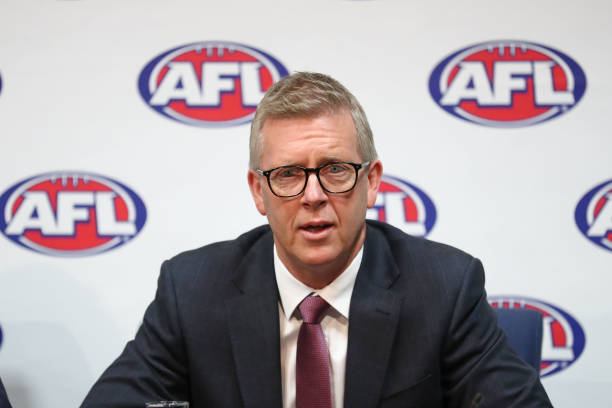In a bold move to elevate the Geelong Football Club‘s infrastructure, the club has announced plans to develop a state-of-the-art training facility adjacent to GMHBA Stadium, with an estimated cost of $60 million. The announcement has sparked significant discussion, particularly following the state government’s controversial decision to allocate $4 million for a new scoreboard at the stadium in the May budget.
Michael Johnston, CEO of the Committee for Geelong, has voiced his support for the club’s ambitious project, highlighting the critical need for investment in the city.
“We are a city in desperate need of investment in a variety of things,” Johnston shared with Shane McInnes. Johnston emphasized the broader benefits such an investment could bring to Geelong, positioning the city as a hub for sports excellence and boosting local economy.
The planned training facility is expected to offer cutting-edge amenities, catering not only to the Geelong Football Club’s athletes but also providing community access. This aligns with the city’s vision to enhance its sporting infrastructure and foster grassroots development.

The $4 million allocation for the new scoreboard, announced in the state budget, drew mixed reactions from the public and local officials. Critics argue that the funds could have been directed towards other pressing community needs. However, Johnston believes that the investment in the Geelong Football Club’s facilities will ultimately benefit the entire city.
“Investing in the Geelong Football Club is investing in our community. The new training facility will not only support our athletes but will also be a valuable asset for local sports and community events,” Johnston stated.
The proposed facility aims to feature modern training rooms, recovery centers, and multipurpose areas, designed to meet the highest standards of professional sports. The development is seen as a strategic move to ensure that the Geelong Football Club remains competitive at the highest level while fostering local talent.
The club’s commitment to enhancing its facilities underscores its dedication to both player welfare and community engagement. The project is anticipated to attract further investments, potentially leading to increased job opportunities and economic growth in the region.
While the $60 million price tag is significant, proponents argue that the long-term benefits far outweigh the initial costs. The facility is expected to serve as a landmark for the city, reinforcing Geelong’s reputation as a premier sports destination.
As the project moves forward, the Geelong Football Club and local authorities will need to work closely to secure funding and navigate the planning processes. With strong support from key figures like Johnston, the vision of a world-class training facility at GMHBA Stadium edges closer to reality, promising a brighter future for both the club and the city of Geelong.
